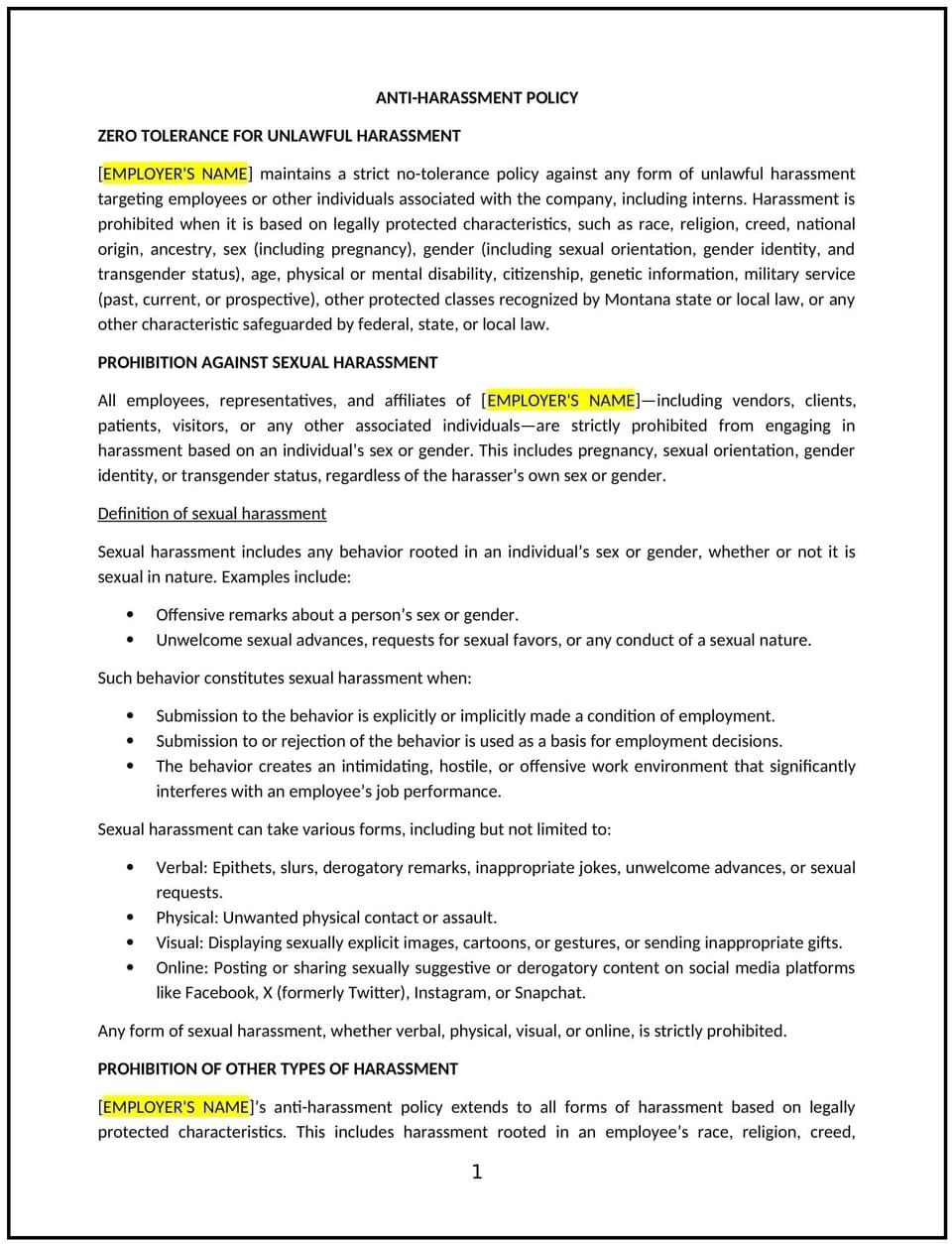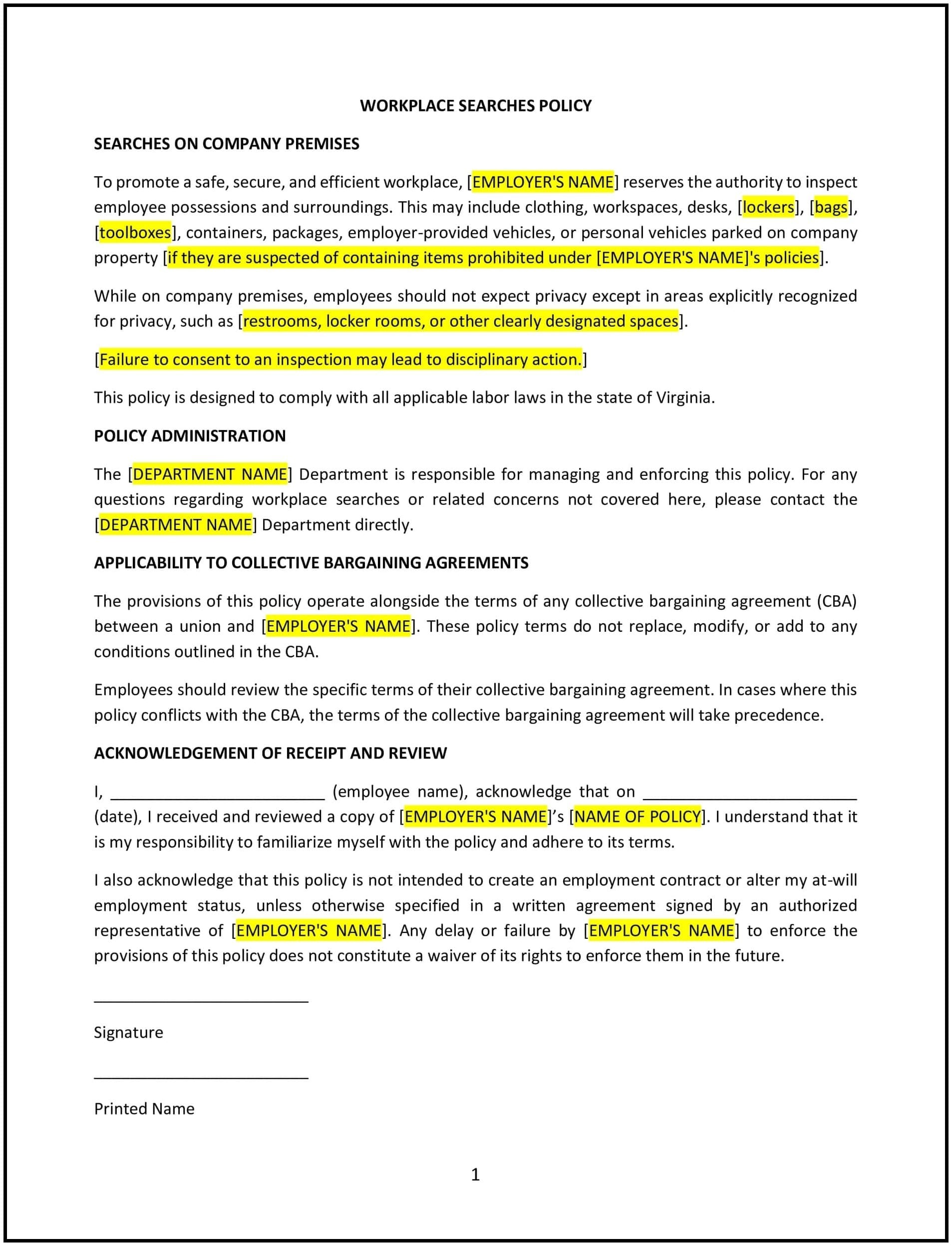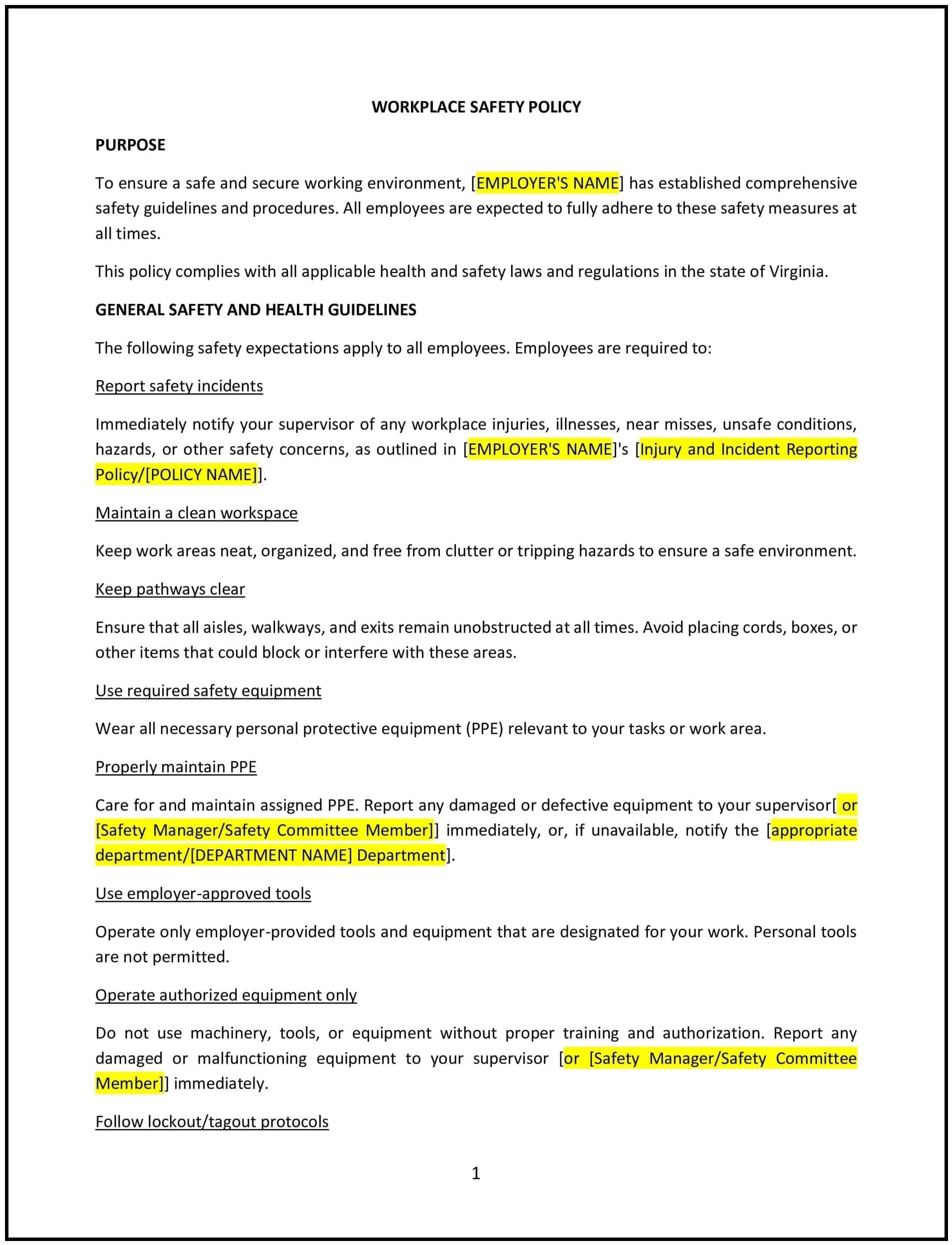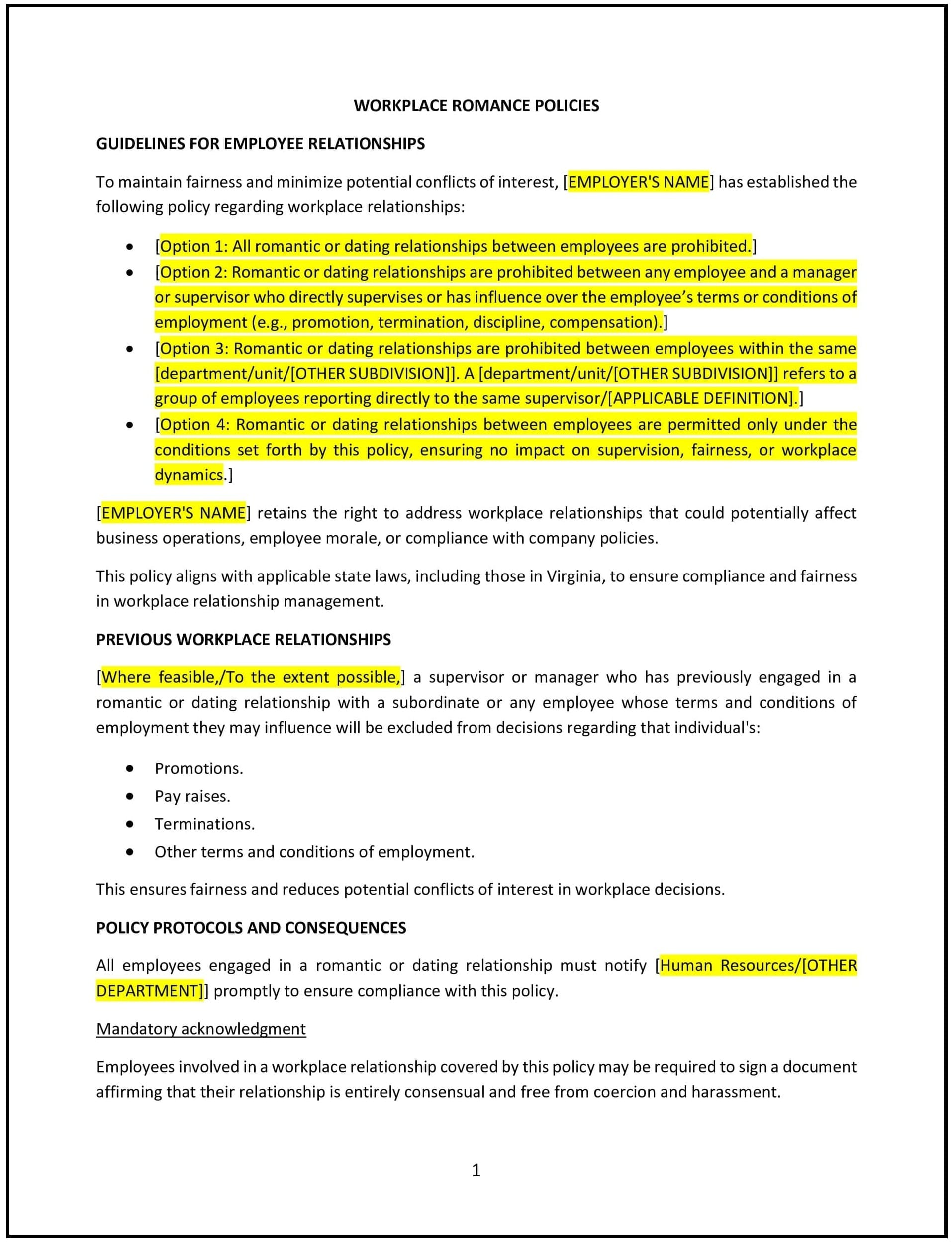Anti-harassment policy (Montana): Free template

Anti-harassment policy (Montana)
An anti-harassment policy helps Montana businesses create a workplace that is free from harassment, discrimination, and inappropriate behavior. This policy defines unacceptable conduct, outlines reporting procedures, and sets expectations for maintaining a respectful work environment. It applies to employees, managers, and third parties, ensuring that all workplace interactions remain professional.
By implementing this policy, businesses can promote a culture of respect, reduce workplace conflicts, and provide employees with clear procedures for addressing concerns.
How to use this anti-harassment policy (Montana)
- Define harassment: Businesses should clearly outline what constitutes harassment, including verbal, physical, visual, and digital misconduct. The policy should address harassment based on race, gender, religion, disability, and other protected characteristics under Montana law.
- Establish reporting procedures: Businesses should provide employees with multiple channels for reporting harassment, including direct supervisors, HR, or anonymous reporting systems. The policy should outline confidentiality measures to protect those who report concerns.
- Outline investigation protocols: Businesses should specify how harassment complaints will be investigated, ensuring a fair and impartial process. The policy should include timeframes for responding to complaints and procedures for documenting findings.
- Set consequences for violations: Businesses should establish disciplinary actions for employees who engage in harassment, which may include warnings, suspension, or termination. The policy should apply consistently to all employees, regardless of rank or tenure.
- Address third-party interactions: Businesses should clarify that harassment policies extend to vendors, contractors, and customers to ensure a safe and professional workplace.
- Provide training requirements: Businesses should require regular training on harassment prevention, including how to recognize, prevent, and report inappropriate behavior.
- Review and update regularly: Businesses should periodically review the policy to reflect changes in Montana employment laws and workplace dynamics.
Benefits of using this anti-harassment policy (Montana)
This policy provides several key benefits for Montana businesses:
- Creates a respectful workplace: A clear policy promotes a culture of professionalism and inclusivity.
- Reduces legal risks: Establishing clear guidelines and procedures helps businesses address harassment issues proactively and avoid potential disputes.
- Encourages employees to report concerns: A structured policy ensures employees feel safe reporting incidents without fear of retaliation.
- Promotes accountability: By defining expectations and consequences, businesses can reinforce a standard of professional behavior.
- Covers all workplace interactions: The policy applies to employees, managers, clients, vendors, and other third parties.
- Supports employee well-being: A harassment-free workplace improves morale, retention, and overall productivity.
Tips for using this anti-harassment policy (Montana)
- Communicate the policy clearly: Businesses should ensure all employees understand the policy and reporting procedures.
- Train managers and HR staff: Supervisors should receive additional training to recognize and address harassment complaints effectively.
- Encourage a zero-tolerance approach: Businesses should make it clear that harassment will not be tolerated at any level.
- Provide confidential reporting options: Employees should have access to secure and anonymous ways to report harassment.
- Enforce policy consistently: Businesses should apply disciplinary measures uniformly across all employees.
- Monitor and update: Businesses should regularly assess the effectiveness of the policy and make necessary adjustments.
Q: Why should Montana businesses implement an anti-harassment policy?
A: Businesses should implement an anti-harassment policy to create a safe and professional work environment. A clear policy helps prevent misconduct, addresses workplace conflicts, and reduces potential legal risks.
Q: What should businesses include in an anti-harassment policy?
A: Businesses should define harassment, outline reporting procedures, establish investigation protocols, and set disciplinary actions for policy violations. The policy should also specify protections against retaliation for employees who report concerns.
Q: How should businesses handle harassment complaints?
A: Businesses should investigate complaints promptly, document findings, and take appropriate corrective action. Investigations should be impartial and follow a structured process to ensure fairness.
Q: What reporting options should businesses provide to employees?
A: Businesses should offer multiple reporting options, such as direct reporting to HR, anonymous reporting systems, and external complaint channels when necessary.
Q: How often should businesses provide harassment prevention training?
A: Businesses should conduct harassment prevention training for all employees at least annually and provide additional training for managers on handling complaints.
Q: Can businesses be held responsible for third-party harassment?
A: Businesses should take reasonable steps to prevent and address harassment involving customers, vendors, and other third parties to protect employees.
Q: What actions should businesses take if harassment occurs?
A: Businesses should take immediate corrective action, which may include employee training, disciplinary measures, or policy updates to prevent future incidents.
Q: How can businesses encourage a culture of respect in the workplace?
A: Businesses should lead by example, enforce the policy consistently, and provide regular training on maintaining a respectful work environment.
Q: Should businesses document all harassment complaints?
A: Businesses should keep detailed records of all complaints, investigations, and outcomes to ensure accountability and transparency.
Q: How often should businesses review their anti-harassment policy?
A: Businesses should review the policy annually or whenever changes in workplace laws or company practices occur.
This article contains general legal information and does not contain legal advice. Cobrief is not a law firm or a substitute for an attorney or law firm. The law is complex and changes often. For legal advice, please ask a lawyer.


